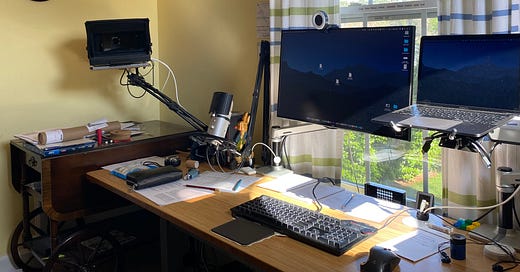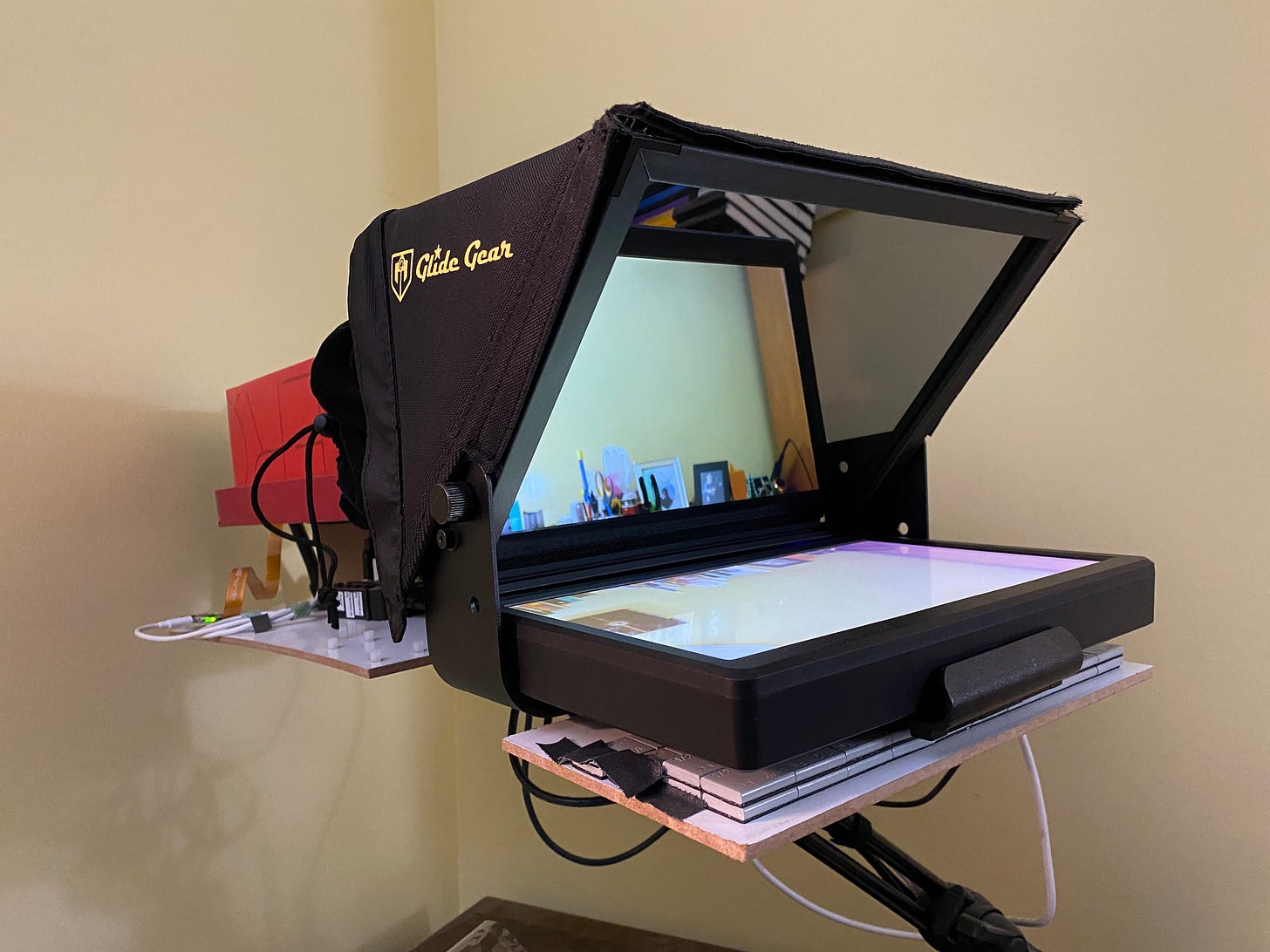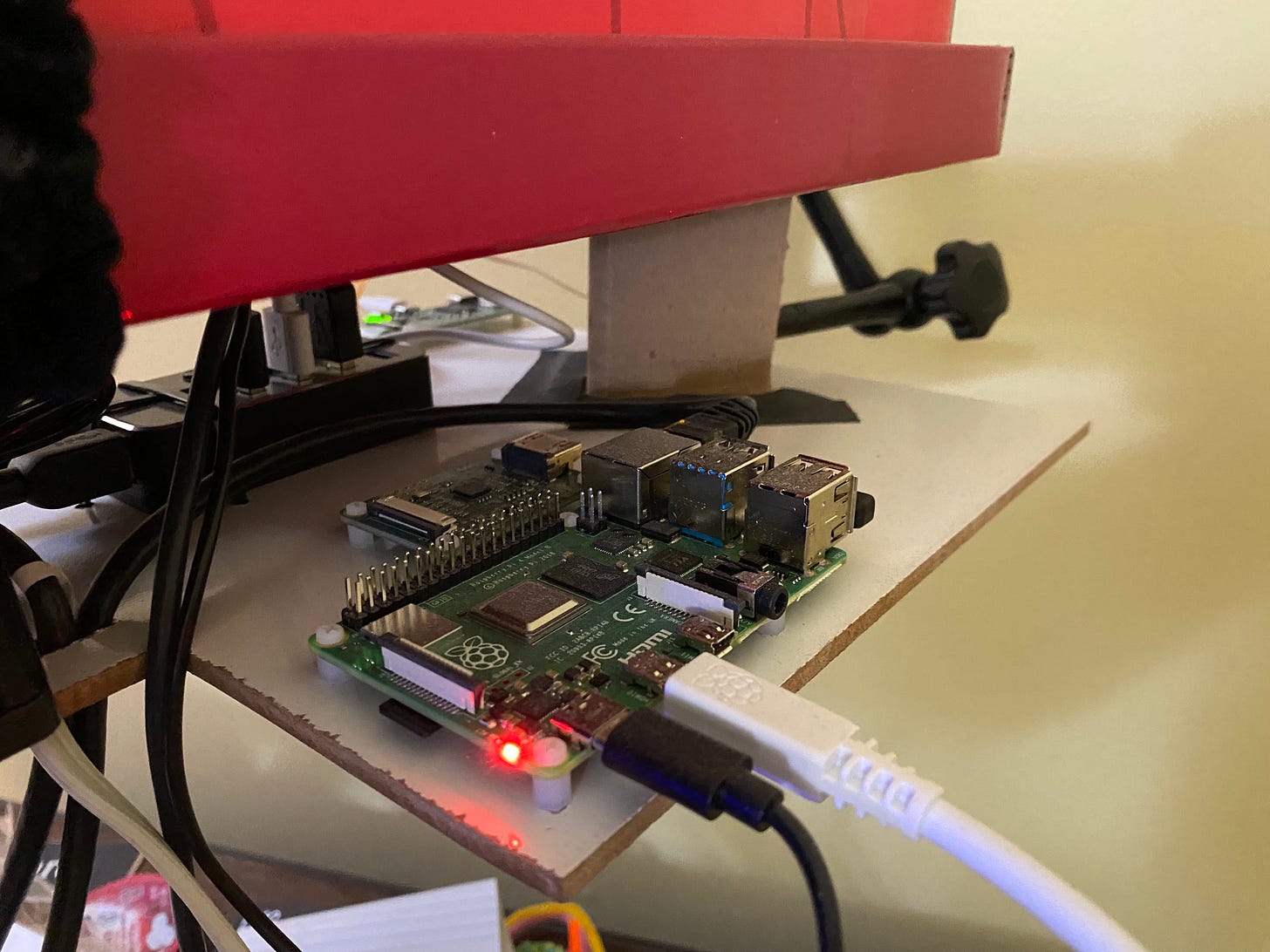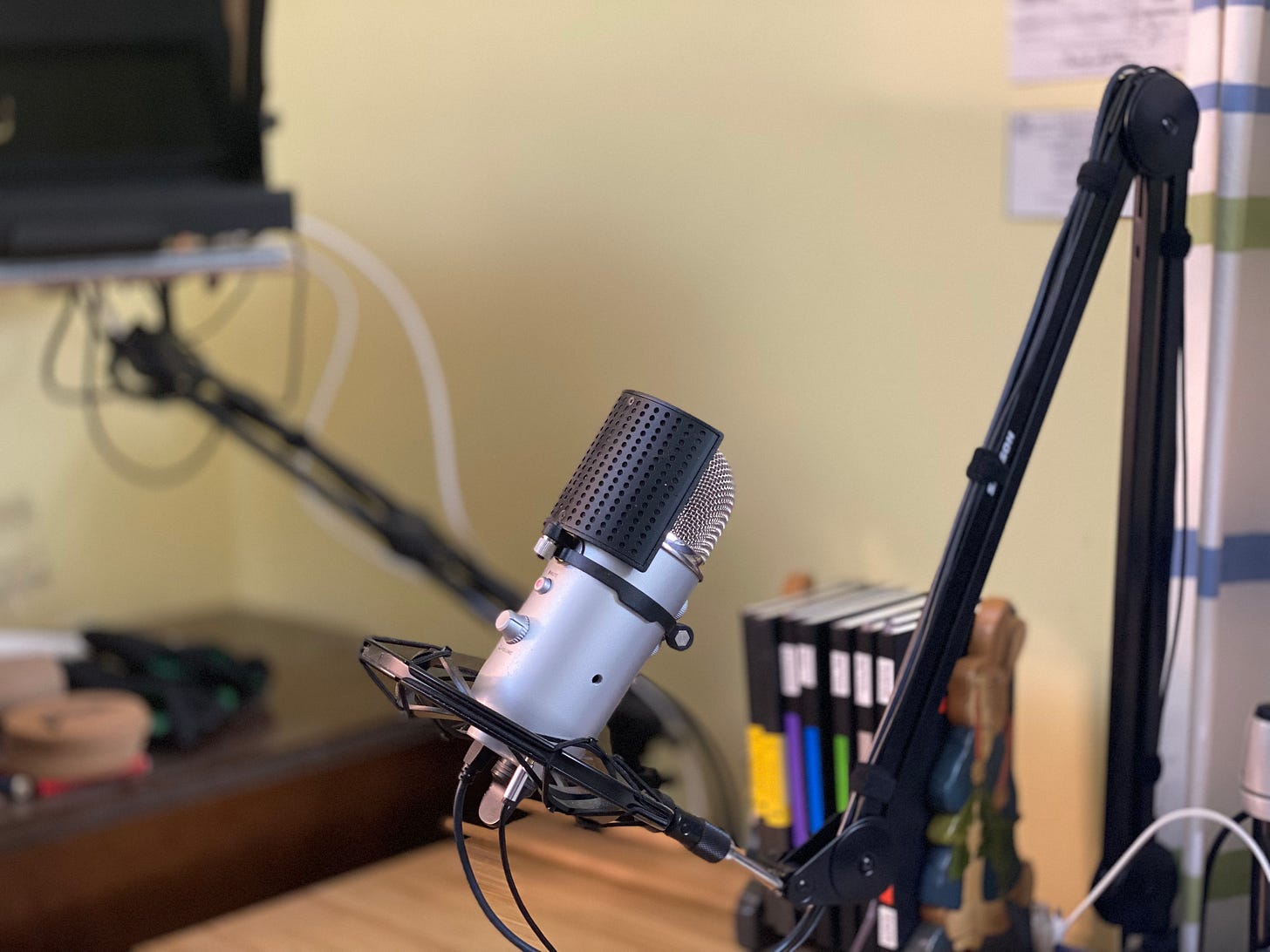Here’s what my video conference setup looked like on the morning of March 22, 2022:
People ask a lot of questions about my camera and audio, but they don’t often know all the other stuff that factored into this design too, so I’m recording my thoughts here to document what I built and to try to communicate the design choices I made as I built it. This first post covers the “Why” and the “What” of what I built; in future weeks, I’ll go into greater detail about the “How”, “When”, and “Where” of individual components. This will probably take five more weeks to get through.
I’d very much appreciate your comments and feedback.
The Videoconference Series
Starting and Finishing (this issue)
The Display (coming soon)
The Desk (coming soon)
Detailing (coming soon)
Starting and Finishing
Why Spend So Much Effort on Video Conferencing?
I used to actively dislike working from home. I liked my office, I liked seeing the people I worked with, and I spent most of my workday in face-to-face meetings that were much less enjoyable over video. That all changed in March 2020.
I was not well-prepared to work from home. My spouse also worked full-time, and we had two young kids to care for and guide through virtual school and no access to childcare. I was halfway through a Masters degree in Analytics. Everything was hard, nothing was comfortable, and there was more to do than ever. I was in a “Problem Rich Environment”.
On top of that, talking on video for many hours per day was exhausting, and in new, unfamiliar ways. Everyone started talking about Zoom Fatigue. I began to draw on lessons I’d learned from my coworkers (especially Nassim) about how to have higher-quality remote work experiences, but I also developed my own hypotheses based on the challenges I encountered in my own conversations. Here are some of the key things I noticed:
It’s very easy to be distracted (or seem distracted) during video calls. When the screen I see your face on is the same place I see Slack notifications, a private 1-on-1 can feel more like chatting while waiting in line to buy coffee. This can easily transition from being a subtle form of disrespect to an overt one - there are many people I talk to regularly who start multitasking any time they’re not the one talking[1]. Caring for young children while working makes this even harder: even if I’m not actively distracted, I may be causing distraction for the people I’m talking to.
Eye contact gets weird. If someone is making eye contact with my image on their screen, they’re not looking at their camera; if they make eye contact with their camera, they can’t actually see my reactions to what they’re saying. This is especially bad when people use their laptop’s built-in webcam as their main camera but an external monitor as their main display: they may feel like they’re “looking at me”, but from my side of the camera, it looks like they’re refusing eye contact.[2]
People look unfamiliar on video calls. We’re used to seeing people a certain way when they appear in TV or in movies, and another way when we see them face-to-face, but video calls feel entirely different due to a combination of focal length, bokeh, lighting quality, perspective, and other factors. We may feel a need to touch up our appearance. And if we choose to avoid distractions by maximizing the conference video window, the other person’s face now appears at a size and perspective that we rarely experience outside of intimate or dystopian contexts.
Some features reinforce artificiality. Even as virtual backgrounds can mitigate distractions, they make it clear that you are not in an ordinary conversation. Echo cancelation makes it easier to have a good call even with a low quality microphone and speaker, but it also makes it harder for people to talk at the same time and can make interruptions seem like a much greater transgression.
My approach to Engineering Management depends on effective, focused, high-bandwidth communication between me and the people I work with. I realized that if I wanted to continue to be effective as a remote employee, I needed to mitigate these problems not only for my own sanity, but to support the other people I regularly work with.
Next week I’ll tell you more about how and where my investigation started – but right now, I’ll go ahead and tell you where things have ended up now, two years later.
What I Built
Here’s a listing of the key components and where I purchased them.
The Teleprompter
Glide Gear TMP100 Teleprompter Frame - everything else was built around this. It features a tray to hold a monitor, a bracket to hold a camera or phone, a piece of 70/30 beam splitter glass mounted at 45 degrees, and a cloth enclosure to keep the light out on the camera side.
Whiteboard MDF for anchoring electronic components.
Wheel Weights to counterbalance the heavy back half of the teleprompter.
Impact Super Clamp for attaching everything to my desk.
Impact 2-Section Double Articulated Arm for holding the teleprompter in the air at that peculiar angle.
The Camera
Raspberry Pi Zero W running showmewebcam. This software is remarkable - it allows the Raspberry Pi to mimic a USB web camera, so I don’t need any special drivers or streaming configuration changes to use it as a video input on my laptop.
Raspberry Pi High Quality Camera with a 12 megapixel image sensor.
11 Inch Magic Arm for mounting the camera to the MDF and positioning it correctly.
Powered USB Hub with Individual On/Off Switch. Sometimes things go wrong and I need to reboot individual components; the individual power switches make this easy.
Shoe Box to allow me to place the camera further back than the teleprompter was designed to accommodate.
The Display Controller
Raspberry Pi 4 Model B, 4 GB running rpiplay to allow me to use the teleprompter as a network-connected monitor with an inverted screen.
Lusya Standard HDMI-Compatible to CSI-2 Adapter Board. I’m not using this yet - but I hope to someday.
The Microphone
Blue Yeti USB Microphone. I know very little about microphones, so I bought it based on The Wirecutter’s recommendation.
Moukey Microphone Pop Filter to help prevent plosives.
Blue Radius III Shockmount to minimize the noise carried through the microphone when I bump my desk.
Samson MBA38 Microphone Boom Arm to move the mic out of the way when not needed
Peter Rabbit book shelf my mom made me when I was little.
That’s it for now - please be sure to subscribe if you’d like to hear more about this in the coming weeks.
-Peter
[1] I think many people don’t realize how much the lighting on their face changes when they switch applications on their monitor or how loud their keystrokes can be.
[2] To be clear, I’m much less concerned about whether someone is making “good eye contact” with me than whether they feel like I’m giving them my full attention. Video conferencing is a new experience for a lot of people and we’ve all needed a lot of extra grace these past few years.








Awesome, Peter! I have been tempted but not headed down the teleprompter path yet. I have my camera mounted off of the right side of the monitor and move the zoom window as close to the edge as I can. Doesn't help with getting distracted, but at least I am more likely to be looking mostly towards the camera when I am focused there.